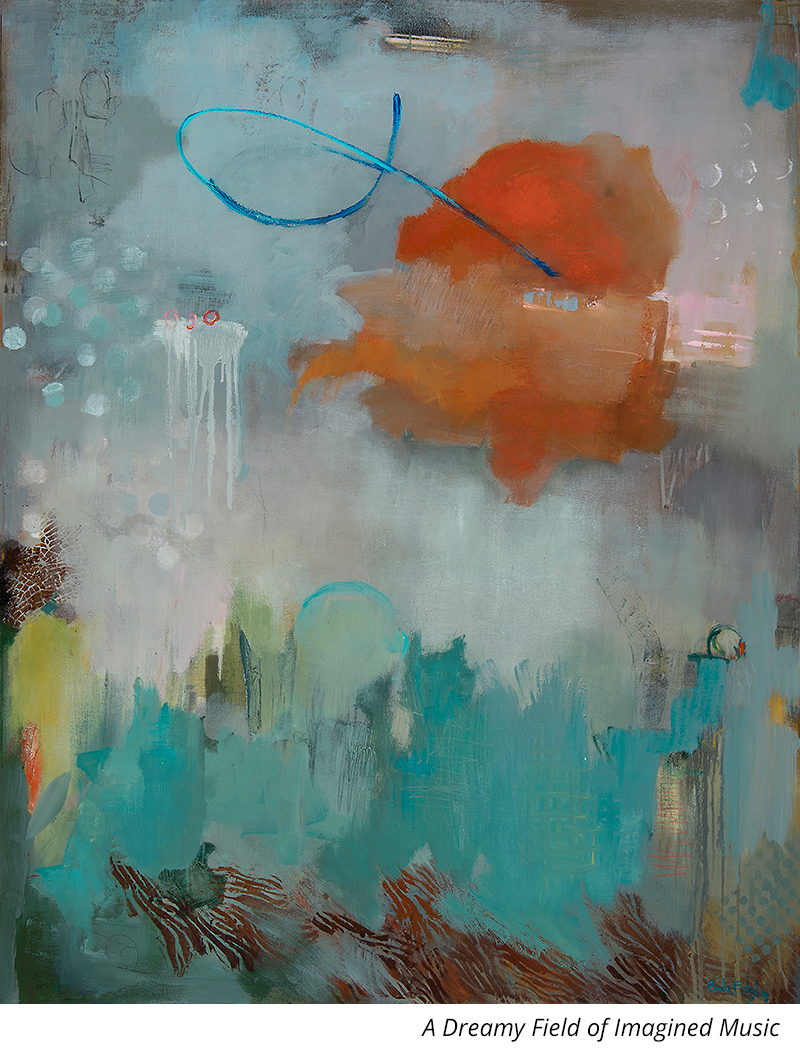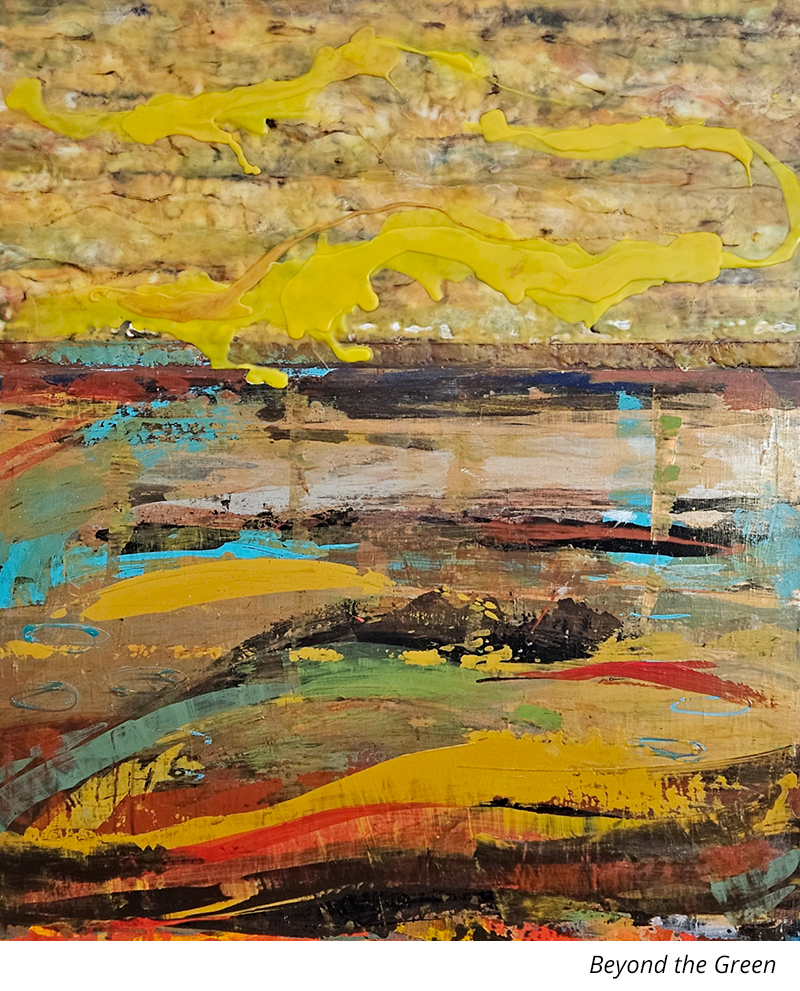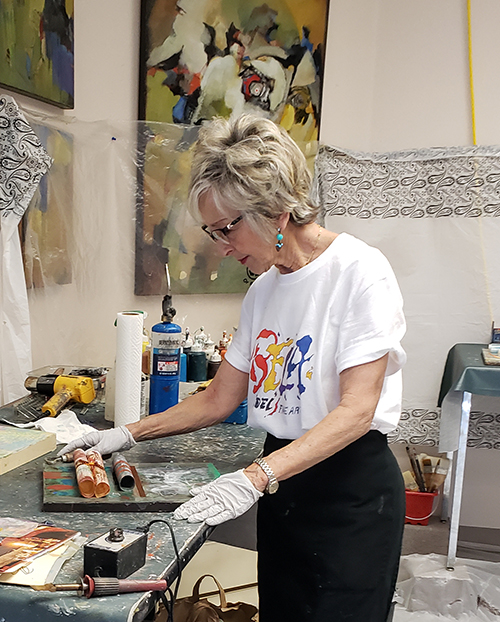
Tell a little bit about how you first got into creating art.
As an adolescent I wanted to become a writer. I was never interested in art, except classical music and literature. I was one of the finalists in an important writing competition organized by a newspaper in my hometown of Sao Paulo, Brazil. But being a perfectionist, after this small success I felt I was not able to write well enough to create a special, “perfect” book and I gave up even before I started. Decades later, out of the blue, I started painting small canvases, without any thought, surprise, expectation. Many years passed and eventually I started taking painting lessons. I still did not have any plans; I just wanted to learn to paint. It took me ten years of working diligently, taking more classes, to realize that I had to paint if I were to stay centered and balanced as a person.
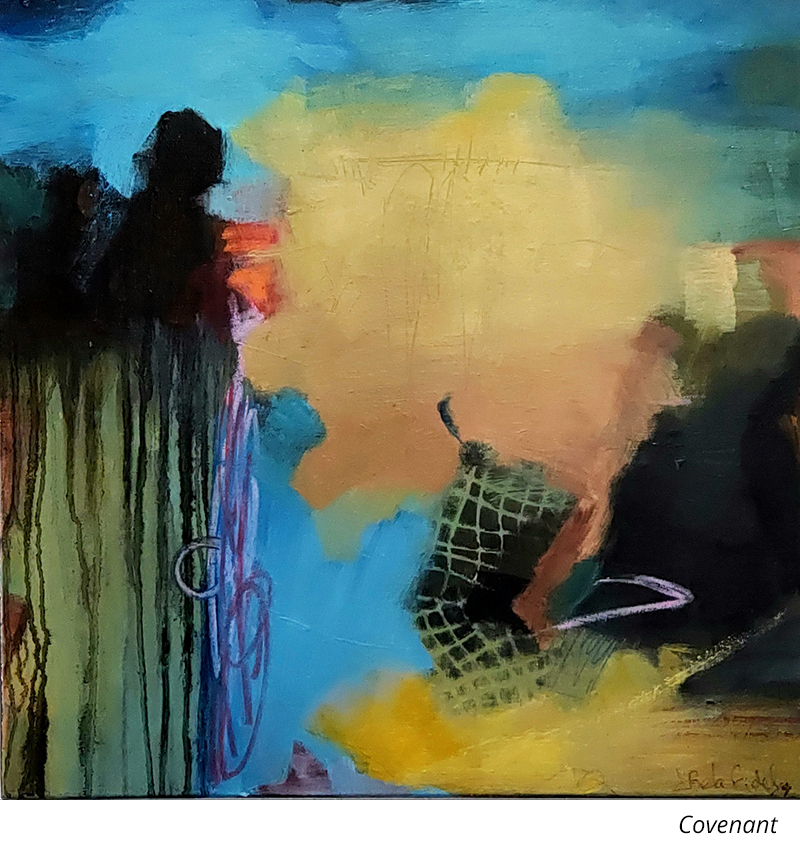
I’ve never followed art movements but painted what my intuition and thoughts moved me to paint
What artists or movements have had an impact on you?
I’ve never followed art movements but painted what my intuition and thoughts moved me to paint. I started with realistic grapes, landscapes, small portraits, evolved to semi-surrealist, then more modernistic and now I am a fully abstract painter. As an abstract painter, however, I fell in love with the New York School of the 40’s and 50’s and Abstract Expressionism, which is still my favorite style and movement.
What is important to you about the visual experiences you create?
Always, without exception, I express my Self. The banner on my website says, “I want to look at my paintings and see my Self in a mirror”. I like contrasts such as raw x smooth, dramatic/passionate x poetic, the physicality of movement in paint x calmness, depth, emotions.
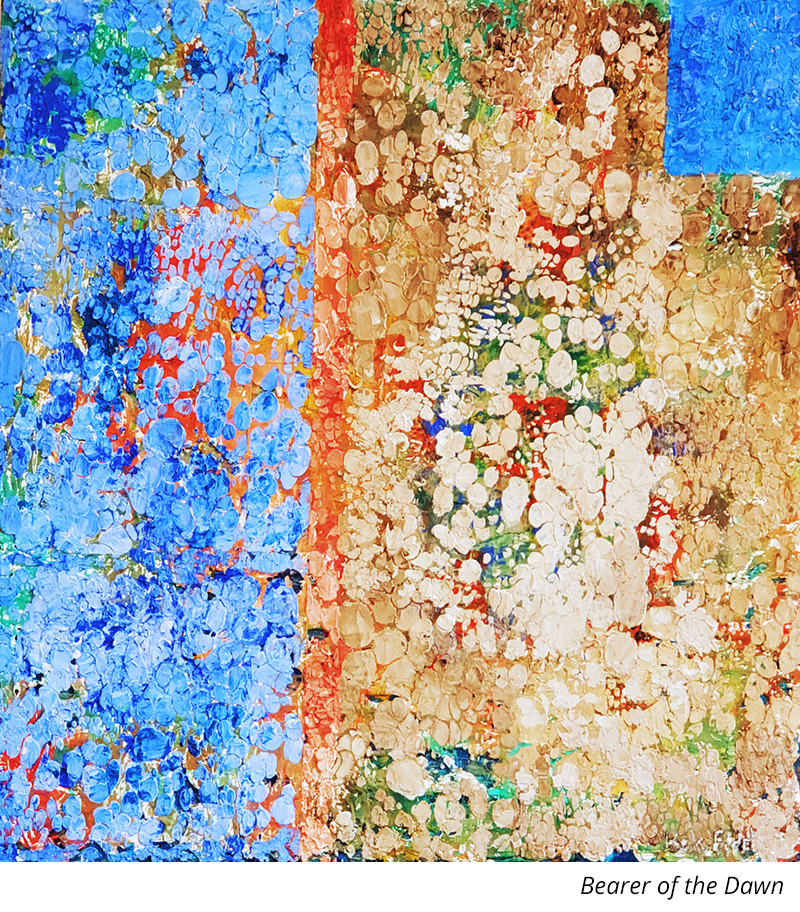
There is meaning and a need for all kinds of art and the function of the artist is to fill these voids
Do you work from memory, life, photographs, or from other resources? Describe your creative process.
It starts with intuitive, spontaneous, unthinking movement of paint, marks on the canvas. A kind of “activating the canvas”. An assessment of what I see takes me to the next step: shapes that I like or can improve on, marks that are dynamic, interesting. The painting tells me what to add or subtract. At some point I start being more methodical, “brainy”, without leaving the intuition and the feel of the creative process. The last stage is the final editing of what stays, what goes, touch ups that are always important.
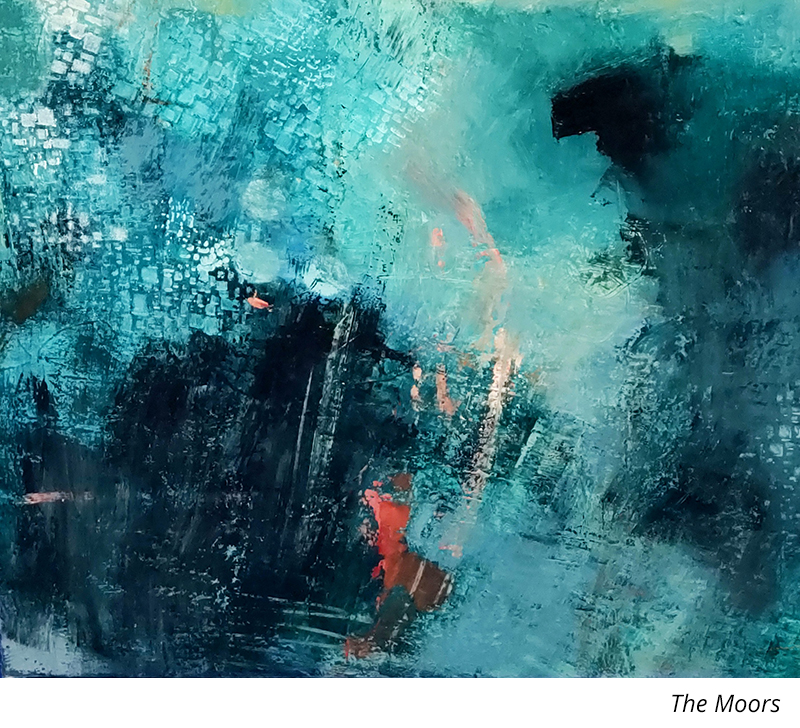
What is your favorite art accident? Did it change your perspective?
My studio is at an old school that no longer operates as such. There is no one there but me and still, on March 15, 2020 the Governor of Arizona ordered all schools shut down and my studio was among those. I filled my car to the ceiling with supplies in 3 trips. At home, I carved a small area in my garage and continued to paint. I had three 38x32 wood panels and had no idea what to do with them. So instead of gessoing them and staring at a white space, I decided to cover them with acrylic using a credit card. Although I was not planning anything but to cover the panel, all of a sudden I realized that the area I had been covering actually looked interesting. And that led me to create a series of three 38x32 panels in acrylic and mixed media, in a style I still use occasionally. Had I not been locked out of my studio, carved out a small area in the garage to paint, I probably would not have reached for those wood panels right then and this special series would not have been created! That was, indeed, a happy accident.
Do you have any artistic goals for the future that you would like to share?
Beginning January 2024 I plan to embark on a longstanding dream to express in paint Rachmaninoff’s Concerto #2. I will try Kickstartart or similar for some funds that will enable me to carve out more free time to develop this goal. I already have some of the canvases, have each concert movement individually filed, have done some research at the Music Library of ASU. But no idea as to how to start, what it will look like, how many canvases it will take. Very scary and very exciting.
What do you consider the role of an artist today?
The goal of an artist today is to reflect society: its ills and blessings, what needs healing, what is enriching or detracting. Those of us who create art “out of context”, such as abstract art or representative art that does not reflect a social, personal or political issue, also contribute with aesthetic, emotions, visual enrichment. Many paintings outside of “context” bring out and reflect emotions while touching hearts and minds. There is meaning and a need for all kinds of art and the function of the artist is to fill these voids.
